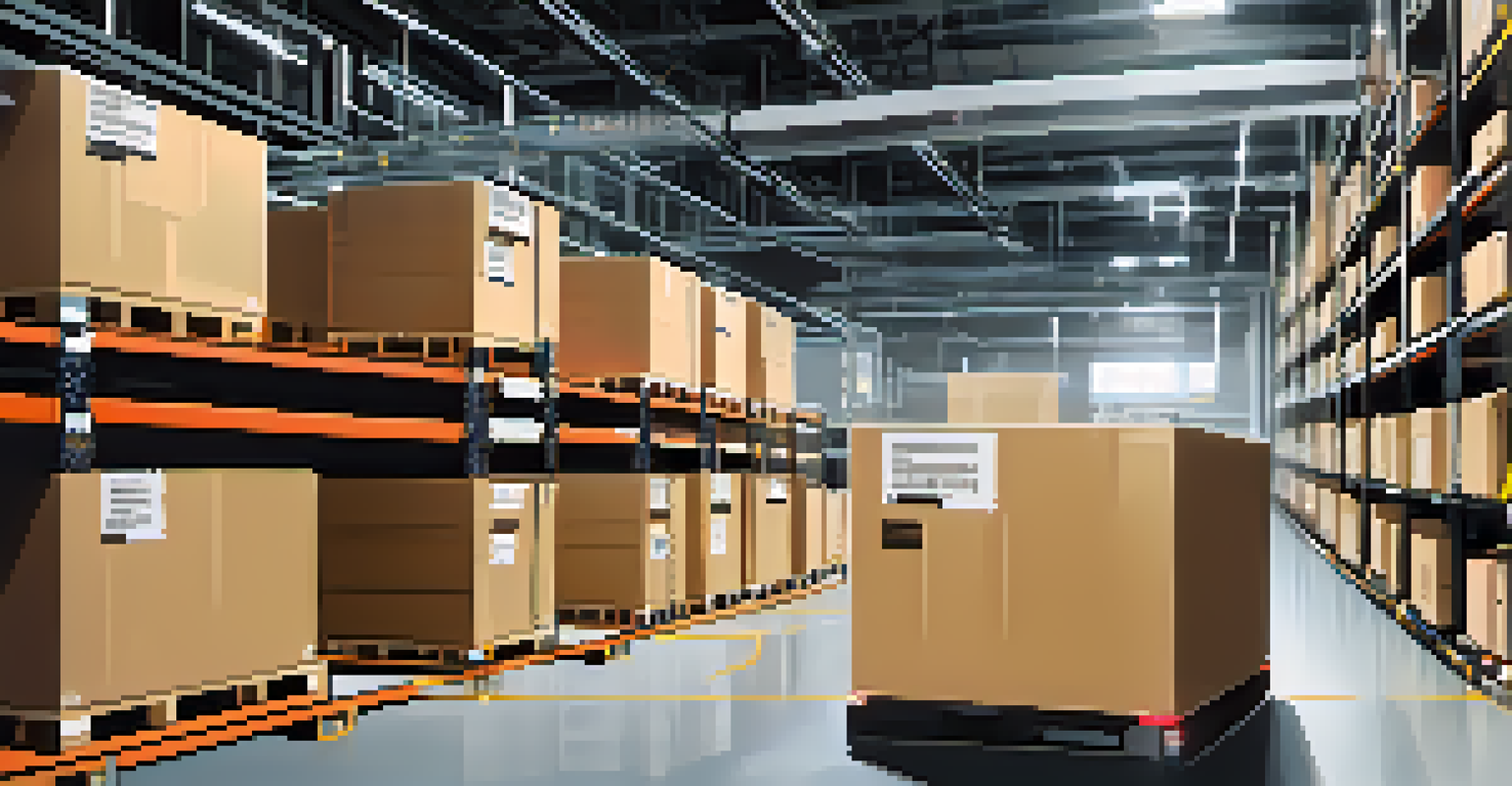Types of Oracles: A Comprehensive Guide for Blockchain Users

Understanding Oracles: The Bridge Between Data and Blockchain
Oracles serve as essential connectors between blockchain networks and the outside world, providing real-time data that smart contracts need to function properly. Without oracles, blockchains would be isolated, unable to access external information like weather data, stock prices, or event outcomes. Think of an oracle as a waiter in a restaurant; the blockchain is the kitchen, and the waiter brings the orders from the customers, which are crucial for making the right dishes.
Oracles are the unsung heroes of the blockchain, providing essential data that bridges the gap between the digital and physical worlds.
In essence, oracles fill a significant gap by delivering off-chain data to on-chain applications. This capability opens up a myriad of opportunities for developers to create more complex and functional decentralized applications (dApps). As blockchain technology continues to evolve, understanding oracles and their role becomes increasingly important for users and developers alike.
Oracles can be categorized into different types based on their functionality and the sources of data they use, making it crucial for blockchain users to grasp these distinctions. Whether you're a developer, investor, or simply a tech enthusiast, knowing how oracles work can enhance your engagement with blockchain technology.
Centralized Oracles: The Simple Solution with Risks
Centralized oracles are operated by a single entity, which means they can quickly deliver data but come with inherent risks, such as single points of failure. Imagine relying on a single weather station to confirm if it’s going to rain; if that station fails or provides incorrect data, your entire plan can fall apart. This lack of decentralization can lead to trust issues, especially in the blockchain community, which values transparency and security.

Despite their vulnerabilities, centralized oracles are often easier to implement and can provide reliable data when the source is trusted. They are commonly used in scenarios where speed is essential, such as financial applications that need immediate price feeds. However, users must weigh the convenience against the potential risks of relying on a single source.
Oracles Connect Blockchain to Data
Oracles act as essential bridges that deliver real-time external data to blockchain networks, enabling smart contracts to function effectively.
As blockchain technology continues to mature, the use of centralized oracles may decline in favor of more secure alternatives. Nevertheless, they still play a significant role in the current landscape, especially for projects that prioritize efficiency over decentralization.
Decentralized Oracles: Enhancing Trust and Reliability
Decentralized oracles leverage multiple data sources to provide information to the blockchain, which significantly reduces the risks associated with centralized oracles. By gathering data from various independent sources, they ensure that no single point of failure can compromise the data's integrity. Think of decentralized oracles as a crowd-sourced review site; the more opinions you gather, the more accurate and trustworthy your overall assessment becomes.
In a world where data is king, oracles are the trusted knights that ensure information integrity and accuracy in decentralized applications.
This type of oracle is particularly valuable in scenarios where accuracy and reliability are paramount, such as in financial contracts and insurance claims. By distributing the data-gathering process, decentralized oracles instill confidence among users, as they can verify information against multiple sources. This enhances the credibility of the smart contracts that rely on them.
Moreover, decentralized oracles are a crucial step toward achieving greater interoperability among blockchain networks. As different platforms and applications seek to share data, having a decentralized oracle can facilitate smoother interactions and collaborations within the blockchain ecosystem.
Inbound and Outbound Oracles: Understanding the Direction of Data
Oracles can also be categorized based on the direction of data flow into inbound and outbound oracles. Inbound oracles bring external data into the blockchain, while outbound oracles send data from the blockchain to the outside world. This distinction is essential for developers when designing smart contracts that require either type of interaction.
For example, an inbound oracle might provide real-time cryptocurrency prices to a trading smart contract, allowing it to execute trades based on current market conditions. Conversely, an outbound oracle might inform an external payment system when a smart contract has been fulfilled, enabling the transfer of funds outside the blockchain. This two-way communication is vital for creating dynamic and responsive dApps.
Centralized vs. Decentralized Oracles
While centralized oracles provide quick data from a single source, decentralized oracles enhance reliability by aggregating information from multiple independent sources.
Understanding the differences between inbound and outbound oracles can help blockchain users choose the right type for their specific needs, ensuring that their applications can effectively interact with both on-chain and off-chain environments.
Consensus-Based Oracles: A Collaborative Approach
Consensus-based oracles rely on multiple nodes to verify the accuracy of data before it's fed into the blockchain, creating a collaborative approach to data validation. This mechanism mimics the consensus process in blockchain networks, where multiple participants must agree on the validity of transactions. By requiring a majority agreement, consensus-based oracles enhance trust and reliability.
For instance, if a group of independent nodes is tasked with reporting the current price of Bitcoin, they will collectively verify the price from various exchanges to ensure accuracy. If the majority agrees on a price, that data is then submitted to the blockchain, minimizing the risk of manipulation or errors. This method is especially useful in environments where the stakes are high, such as in financial markets.
The collaborative nature of these oracles fosters a sense of community among participants, encouraging more decentralized and secure data sourcing. As the blockchain ecosystem continues to grow, consensus-based oracles represent a promising direction for achieving greater data integrity.
Hardware Oracles: Bridging IoT and Blockchain
Hardware oracles serve as physical devices that provide real-world data directly to the blockchain, creating a bridge between the Internet of Things (IoT) and blockchain technology. For example, a temperature sensor used in supply chain management can send temperature data to a smart contract, ensuring that perishable goods are stored under proper conditions throughout their journey. This integration of hardware and blockchain enhances transparency and accountability.
By utilizing hardware oracles, industries can automate processes and improve data accuracy, unlocking new possibilities for innovation and efficiency. However, the implementation of hardware oracles also raises concerns about security and reliability, as physical devices can be tampered with or fail. Thus, ensuring the integrity of the data collected by these devices is paramount.
Emerging Trends in Oracle Technology
The future of oracles is marked by increased decentralization, transparency, and the integration of advanced technologies like machine learning and AI.
As IoT continues to expand, the role of hardware oracles will likely become more significant, especially in sectors like agriculture, logistics, and healthcare. By linking physical data with blockchain, businesses can create more resilient and transparent systems.
The Future of Oracles: Trends and Innovations
The landscape of oracles is rapidly evolving, with new trends and innovations shaping how they interact with blockchain technology. One significant trend is the push towards increased decentralization and transparency, as developers recognize the limitations of traditional centralized oracles. This shift is likely to lead to more robust and secure applications that leverage decentralized oracle networks.
Another exciting development is the integration of machine learning and artificial intelligence into oracle systems. By using algorithms to analyze vast amounts of data, these advanced oracles can improve the accuracy and reliability of information fed into blockchains. This could dramatically enhance decision-making processes in various industries, from finance to healthcare.

As blockchain technology continues to mature, the role of oracles will become increasingly central to its success. By keeping an eye on these trends, blockchain users can better navigate the future landscape and leverage oracles to their advantage.